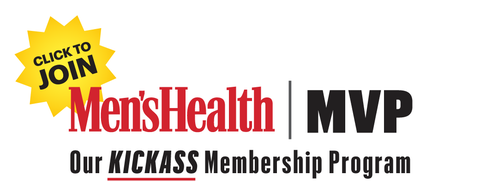This is Your Quick Training Tip, a chance to learn how to work smarter in just a few moments so you can get right to your workout.
The various sports that make up the Olympic Games are awe-inspiring in general, but if you spend a lot of time around the weight rack, you likely find the weightlifting events wholly captivating. There’s something about watching athletes from around the world heft enough iron overhead to bow a 1.1-inch-thick stainless-steel bar—a load often equal to more than three times their bodyweight—that takes one’s breath away. The discipline is the quintessential expression of explosive strength and power, and following the lead of these incredible competitors in your training plan can help you build a remarkable amount of athletic skill.
But around less specialized training spaces, there is some confusion as to what actually constitutes an Olympic lift. There are two official Olympic lifts: the snatch and the clean and jerk. You’ve likely heard the names of other “Olympic” lifts batted around the gym (or Oly lifts, as is often used for shorthand especially in CrossFit boxes), including the power snatch and the power clean. That’s not quite right. While the aforementioned exercises are powerful muscle builders, they aren’t practiced in the venerated international competition—and therefore not technically Olympic lifts.
The objective of the snatch is to heave the bar overhead from the ground in one continuous motion. The lifter typically accomplishes that by first dropping underneath the bar in a squat, and then driving up into a standing position. In the clean and jerk, the athlete first lifts the bar from the ground to the shoulders (clean), and then presses it overhead (jerk).

Both lifts are highly technical and not for the novice lifter—indeed, we would recommend that you not attempt either lift without some in-person coaching first. But that doesn’t mean you can’t include Olympic-style moves in your training program. No matter how much lifting experience you have or what your fitness level is, there are plenty of “Oly” variations that can help you achieve your strength and power goals.
Your move: True Olympic lifts typically require a specialized platform consisting of wood and rubber that allows the athlete to drop the weight from overhead without sending the loaded barbell through the floor. You also need competition weight plates—or at least bumper plates, in a pinch—to perform the exercises safely.
But if your gym doesn’t have platforms and the correct type of plates—or if you don’t feel ready to try the snatch or clean and jerk—there are other Olympic-style lifts you can do instead that will help you build the same explosive power. And in the process, you’ll also master the movement patterns that will allow you to perform the full Olympic versions.
Source: Read Full Article


